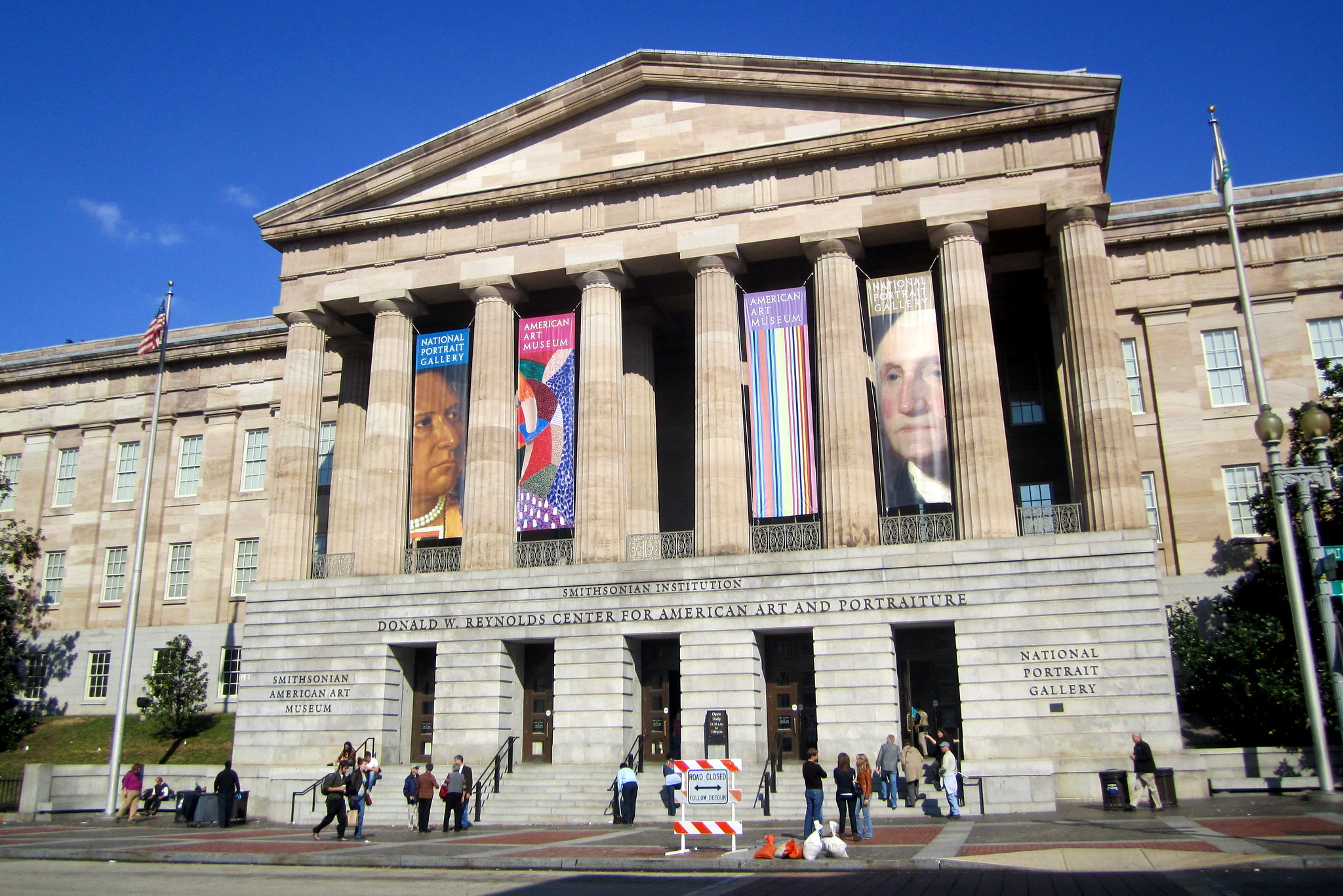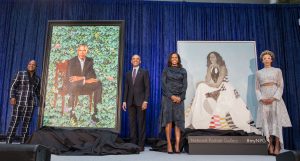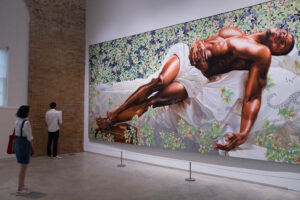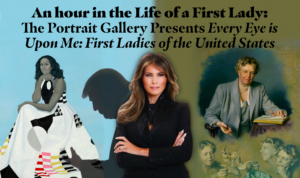Content warning: mentions of sexual assault, racism
“This selection of portraits seeks to inspire learning and inquiry through the celebration of women, whose stories are often unsung or missing from the written record,” the opening blurb to the exhibition. The National Portrait Gallery brought Women’s History Month to a close with a special exhibit arranged by Google Arts and Culture celebrating trailblazing American women. Portraits of women, lined up in a slideshow, come and go with a click of a button, sometimes interspersed with headings designating the theme of smaller collections.
The diversity of stories, coupled with an equally varied set of artistic styles, represented the uniquely difficult and triumphant lives of women in American history and culture. Their stories were further promoted by several YouTube livestreamed events.
A portrait of Madam C. J. Walker is the introduction to a set of women with business and academic influence, two areas that have been traditionally dominated by men. Walker’s likeness was captured by famed photographer Addison N. Scurlock, who was known for photographing prominent African American figures. Though the gallery includes painted portraits, the collection also features some created through newer mediums over time.
Walker’s portrait experiments with light by partially cloaking her in shadow, with only her torso visible. She wears a lacy white dress with simple and delicate jewelry gleaming around her throat and dangling from her ears. She smiles, satisfied, and for good reason: Walker, as the short text description shares, was the first African American millionaire after founding a successful business empire for Black beauty products.
A similarly fuzzy photograph of two women standing outside a bookshop graces the virtual slideshow. Sylvia Beach, founder of the Paris-based Shakespeare and Company store and lending library, is pictured with her assistant Myrsine Moschos. Beach’s institution emerged at a monumental moment in history: World War I. She became immortalized in history as a woman who facilitated a significant cultural landmark for English and American writers abroad. She turns halfway toward the camera, a faint smile on her face, as Moschos holds a black dog in her arms. They look as if they were caught in everyday conversation, discussing the piles of books visible through the glass storefront, through a snapshot by an unknown, invisible figure.
Within the subdivisions of collections, present-day figures are spotlighted as well: the gallery brightens with a colorful photograph of Indra Nooyi, former CEO and Chairman of PepsiCo. The vivid red background, paired with the orange armchair and the teal scarf wrapped around Nooyi’s shoulders, brings a modern flavor to the exhibit. In an almost advertisement-like manner, Nooyi looks straight into the camera with a large grin on her face, and the accompanying text has a rather vague explanation of Nooyi’s work, in which she “emphasized diversity and inclusion” and helped “facilitate work-life balance.”
Another modern woman is ocean conservationist Julie Packard, whose portrait is captured in a swirl of bright colors in brush strokes. Artist Hope Gangloff created the painting only two years ago, imbuing the work with refreshing vibrancy: a wall of turquoise, blue, and orange stretches upwards behind the figure in the foreground. Packard looks off to the side, past the artist, with a serious yet serene contemplation. Her arms are crossed, and she wears a corduroy-like jacket, with a multicolored scarf wrapped around her neck and cascading down her front. Her fine, silvery hair gleams gently. The portrait seamlessly unites her radiance with that of the marine life toward which she is so dedicated. Packard helped to establish the Monterey Bay Aquarium, where she currently oversees the Research Institute.
The gallery then transitions to women within artistic fields: performers and athletes. Just as women belong in and have established themselves in fields of intellect and reason, they also excel in those of athletic talent, artistic craft, and diligence—even when faced with hardship. The opening portrait for the section presents a departure from the standard photograph or painting: Joseph Grant’s art deco style generates a shy, slightly mournful image of Chinese American film actress Anna May Wong using India ink and a type of watercolor called gouache.
A muted grayish blue hue stains the background, as Wong’s face and upper torso fills the rest of the illustration board. Her eyes are cast down, feathery eyelashes fanning her cheeks. A sleek bob and swooping bangs frame her pale, round face and her shining lips. Her somber expression is possibly due to the rampant racism Wong endured that ultimately led to her departure from Hollywood to Europe. However, she eventually returned back to America for The Gallery of Madame Liu-Tsong (1951), becoming the first Asian American woman to fill a starring role on television.
The Fisk University Jubilee Singers, the first large group to appear within the gallery, are also acquainted with struggle and triumph. The singers were all formerly enslaved but later became majorly successful across America, going to the White House and even meeting Queen Victoria in England. Their portrait has a professional gravity, with ten people arranged in chairs and a small table standing in their midst. Some of the figures look down, while others look at the camera. The women sit amongst frills and pleats, while men are clad in cleanly tailored, black and white suits. Equally as composed are the neatly labelled names across the bottom of the photograph from a precise typewriter.
Performance and athleticism shine out from the portrait of Maria Tallchief. Born on a reservation in Oklahoma, Tallchief is the first American ballerina who achieved international fame. She also founded the Chicago City Ballet, and her professionalism and dedication is visible in the photograph. She is in motion, rehearsing pas de deux with a man, who grips her left arm with precision and strength as she reaches towards the ground. Her face makes a slight grimace of exertion and concentration, and her ankle is taut as it sustains her weight atop the box of the pointe shoe, but her fingers are spread gently in the air. She makes a gentle reach, disguising the physicality with grace.
The black-and-white photographs share the stage with pastel-sketched art illustrating Althea Gibson’s beaming face. Watercolor and graphite pencil blend to form the picture of a woman whose tennis skill so impressed the masses that the sport as a whole thus became popularized within the general public. The artist, Boris Chaliapin, positions her face in the foreground and adds a birds-eye view of a peach tennis court, along with a shadow of a tennis racquet, behind her. The sketch honors both Gibson’s physical presence, through the gentle crinkles underneath her eyes and her blueish black curls, and her cultural import.
Next, a photograph with a creamy, muted filter brings a timeless grace, matching the presence of the subject, Sheryl Swoopes, who was the first woman to sign in the WNBA. Her portrait is also Google’s cover image for the gallery. Lanky arms rest comfortably on jean-clad, spread legs, establishing a quiet, but nonetheless mighty power. She gazes placidly at the camera, with bands around her wrists and fingers that glimmer in the light. The image is simple but touching. At the bottom of the selenium-toned photograph, both Swoopes’s and photographer Rick Chapman’s signatures are carefully printed and preserved.
The last section displays advocates and revolutionaries, women who fought and changed society for the better. Despite the ongoing struggle of marginalization, women have certainly been a crucial part of history.
An old photograph of Sarah Winnemucca slides into view, where she stands with one foot behind the other, amongst hay and a neutral backdrop. Winnemucca was an advocate for Native rights and published the first known autobiography of a Native woman. She possessed the ability to converse in several languages and even performed a tour of lectures across America. Though appearing small in stature, she commands attention. Her figure is covered in articles of clothing intricately crafted with fringed and woven fabric. Perhaps most eye-catching is the layered, beaded creation arranged across her collarbone. A small satchel hangs at her hip underneath her left arm. She looks at the camera, serious and alert, with wide eyes and tight lips. The portrait showcases the intention and authority that Winnemucca exudes.
Juanita Jackson Mitchell stands among a group in a brick-walled room, where shiny shoes are lined up on hard stone. Men, and one other woman, stare at the camera, and Mitchell grasps the hand of Charles Weems. The men are eight of the nine Scottsboro Boys, who were falsely accused of raping two white women. Mitchell stands in solidarity with them, joined by the firmly clasped hand. However, the next slide image zooms into Mitchell in particular. She founded the NAACP youth and college division, was the first African American woman to graduate from the University of Maryland Law School, and was the first African American woman to be admitted to the Maryland Bar. Cool and collected, she wears a tailored, simple, long coat with a burst of fur at her right shoulder. Her lips are upturned, and she radiates assuredness and composure. Though the Scottsboro Boys’ journey to freedom was long and hard, success eventually came. Mitchell, small in stature compared to the men, is nevertheless a hugely influential figure in American history.
The last image of the gallery is a delicate pencil sketch of Leonora O’Reilly in 1912. The motion of the graphite strokes matches the action depicted in the image: O’Reilly is in profile, talking and pointing. Her slim figure is enrobed in a simple coat and turtleneck, her hair is pinned back, her brow slightly furrowed, and she is ready to jump into action. O’Reilly was an orator, suffragist, and advocate for women’s rights in the workplace. After leaving school for work at an early age, O’Reilly later created Wage Earners’ League for Woman Suffrage in NYC. Her humble, hard-working story is inspirational and accordingly conveyed by Wallace Morgan’s sketch.
Each portrait, centering the visage of multiple women throughout history, brought to life a significant contributor to American history and culture. The gallery collected a satisfactorily varied number of women to illuminate their manifold talents, while the diverse art styles kept the gallery fresh and intriguing with every advance.
Although the Google Arts & Culture portion worked well, the virtual festival did not go as seamlessly. The pitfalls of a virtual venue inevitably overtook the festival at times: links would not load, videos were not available, and the registration process was mildly confusing. However, the events, which included a Washington Ballet-hosted event about Maria Tallchief and a Virtual Writing Hour, were quite interesting and would have been especially appealing to young children. For instance, the National Portrait Gallery collaborated with DC Public Library (DCPL) to host a virtual storytime for children on Julie Packard.
The gallery livestreamed a Zoom call between Tara Thomas, a DCPL representative, and Irina Rubinstein, from the gallery, on YouTube. Through sometimes lagging and cut-off audio, Thomas and Rubinstein performed a satisfactory storytime presentation of Shark Lady, about Eugenie Clark, another influential woman in science. Paired with an explanation of the painting and a science experiment on how to model ocean layers using household liquids, the event was comforting and well-constructed, despite the challenges. Ultimately, the events did supplement the gallery as best as possible, given the restrictions of the virtual environment.
“Where There Is a Woman There Is Magic” certainly created a full picture of the presence of women throughout history, from different cultures and fields. The variance in artistic medium, including pencil, watercolor, and photography, provided visual flair and supported the stories of the women. The collection was valuable for its educational background, sharing stories of women that can often be overlooked. The National Portrait Gallery created a wonderfully wide space to put a spotlight on the multifaceted, diverse nature of women in America.





